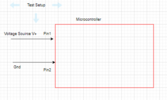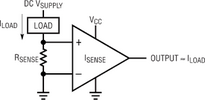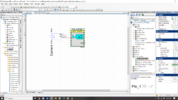I planned to test the phase currents i have board which is partially populated, need to confirm if the firmware is reading the currents properly
View attachment 58507
The Red section is a microcontroller and has in built Opamp which will amplify the signal and then connect to ADC (internal to micro). I created the following setup
View attachment 58508
I have connected the power source of certain voltage and not populating the Rshunt and measuring the adc count. Is this proper setup simulating voltage without actually passing current?
Hi,
Based on your description, it seems like you're trying to test the phase currents on a partially populated board with a microcontroller that has a built-in opamp for signal amplification, connected to an internal ADC. However, you mentioned that you have not populated the Rshunt and are measuring the ADC count without passing any actual current.
It's important to note that without the Rshunt being populated, you may not get accurate readings for the phase currents. The Rshunt is typically used to create a voltage drop proportional to the current, allowing for accurate current measurements. Without the Rshunt, there may not be a proper current path, and the ADC readings may not be reliable.
To ensure that your firmware is reading the currents properly, it's recommended to populate the Rshunt according to the board's design and specifications. This will allow the current to flow through the Rshunt, creating a measurable voltage drop that can be accurately amplified by the built-in opamp and measured by the ADC.
For a step-by-step guide on how to test a MOSFET in-circuit, you can refer to
https://multimeterworld.com/how-to-test-mosfet-in-circuit-a-step-by-step-guide/. It provides detailed instructions on how to test MOSFETs using a multimeter, ensuring accuracy and safety.
Hope this helps! If you have further questions, feel free to ask.









